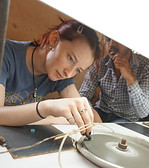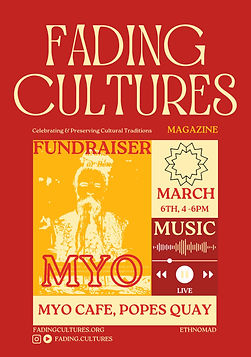

Hannah
About me
Hannah is one of this year’s Ethnomad Ethnographic Explorers, bringing a unique blend of heritage and passion to her work. Born in Ireland, her journey is deeply rooted in her efforts to reconnect with her Irish heritage and her growing interest in tribal communities and traditional livelihoods. This connection has shaped her academic and professional ambitions. Currently studying International Development at University College Cork (UCC) in Ireland, Hannah is preparing for an ethnographic journey to Rajasthan, India, in partnership with "BODH Shiksha Samiti, India". Her work will immerse her in the rich cultural tapestry of the tribal people, exploring their history, heritage, and unique societal structures. She will also focus on the local arts and artisans of Rajasthan and beyond, delving into their way of life, history, and heritage. Hannah's exploration reflects Ethnomad’s mission to document, celebrate, and support cultural diversity. By working with the Rajasthani communities, she aims to uncover and share their stories, highlighting the resilience, traditions, and wisdom that define their ways of life.
Pre-departure
Since securing this incredible internship, I have immersed myself in the vibrant pages and captivating images depicting Rajasthan's diverse cultures. Yet, despite all my preparations, I know these resources only scratch the surface. Rajasthan's rich history, dazzling colours, and dynamic traditions cannot be fully captured from afar. Soon, descriptions of the relentless heat under the Rajasthani summer sun will no longer be abstract concepts—they will become my daily reality when I arrive in Jaipur next week. My academic journey over the past few years, studying various disciplines within International Development, has provided me with a solid theoretical foundation. But theory alone isn't enough. Inspired by anthropologists like Bronislaw Malinowski, whose immersive approach to participant observation has deeply influenced my understanding, I am ready to move beyond textbooks and truly experience what it means to live and learn among the communities I study. During my time in Rajasthan, I aim to listen deeply, learn humbly, and amplify the voices of tradition and heritage in ways that genuinely reflect their stories and struggles. This research trip is more than just academic fieldwork—it's a journey dedicated to documenting the rhythms of everyday life, from tribal artisans and local storytellers to understanding the broader challenges these communities face in preserving their cultural identity. If you've ever wondered what living and working as an ethnographer means, I invite you to follow my journey with Fading Cultures. These stories aren't mine alone—they belong to the remarkable people I'll meet along the way. Join me in uncovering the heart and soul of Rajasthan as together we explore and celebrate these precious, fading cultures.


My journey so far...
Pre-Departure













